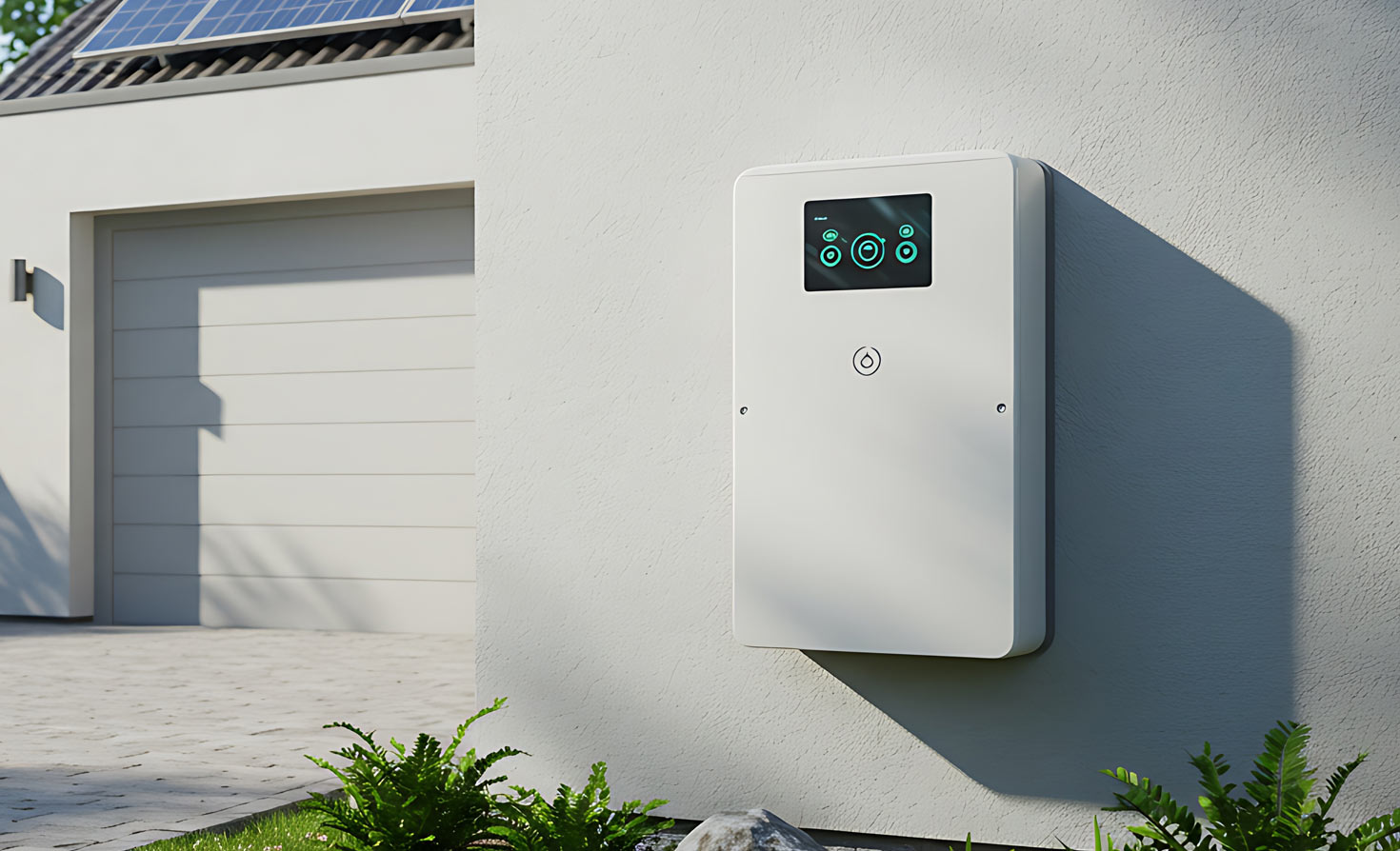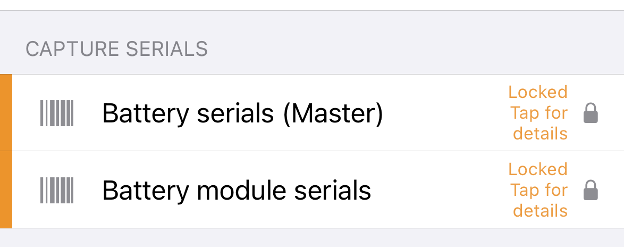Published: June 30, 2025
Battery STCs:
Cheaper Home Batteries Program Launches 1 July
Here’s a quick reference guide to help you navigate the scheme efficiently. For more information, you can also visit dcceew.gov.au/cheaper-home-batteries

Table of Contents
- CER Processing Times
- Tips Before You Submit
- Your Daily Install Limits
- Transition Period: 1 July – 10 August 2025
- Battery STCs & State Incentive Compatibility
- Battery STC Eligibility Checklist
- FAQ - Can I Add a Module to an Existing Stackable Battery System?
- FAQ – Clarifying Date of Commissioning
- FAQ - All-in-One Battery Systems
- FAQ - Oversized Inverters with Batteries
- What battery serials should I scan?
- Evidence Off Grid Systems
1. CER Processing Times
We understand how important fast processing is, especially for small businesses managing tight cash flow. As the Cheaper Home Batteries Program rolls out, the Clean Energy Regulator (CER) will be manually reviewing all battery STC applications. This means processing will take a little longer than usual.
To help your jobs progress smoothly, please ensure you submit accurate and compliant applications the first time.
This will reduce delays and help us process certificates faster for everyone. If you're unsure, check out our Tips Before You Submit.
2. Tips Before You Submit
Before you click Submit, please double-check the following to avoid unnecessary delays:
- Date of test: Ensure that Certificate of Electrical Compliance, STC form, and commissioning selfie all show the same date.
- Signatures: All signatures must be captured on or after the job was completed, never before.
- Installer onsite evidence: The installer must take at least three selfies clearly showing they were onsite.
- Photo quality: Battery and inverter nameplates must clearly show the serial number and model.
- Battery Serials: Provide correct and accurate serials. Refer to ‘What battery serials should I scan?’
If there are any issues with your job, our team will contact you to resolve them before it can be submitted to the CER.
Please take a moment to review everything carefully before you click submit to avoid unnecessary delays.
3. Your Daily Install Limits
SAA-accredited installers are limited to:
- 2 x PV installs only, or
- 2 x battery installs only, or
- 1 x PV + 1 x battery install
(Even if both are at the same address)
We’ve combined PV and Battery STCs into a single form to simplify data capture onsite.
However, a solar + battery installation counts as two separate applications, even if they are for the same address.
4. Transition Period: 1 July – 10 August 2025
During the period of 1 July to 10 August 2025, “Ready to Commission” systems can be commissioned and signed off within ONE of the following combinations per day:
- a) Two solar systems,
- b) Two battery systems,
- c) One solar system and one battery system,
- d) One solar system and two “Ready to Commission” systems,
- e) One battery system and two “Ready to Commission” systems or,
- f) Four “Ready to Commission” systems
A “Ready to Commission” system is a battery system OR a battery and solar system at the same site that was physically installed between 6 April and 30 June but not commissioned or energised.
“Ready to Commission” jobs will have the installers’ set up and/or mid install selfies taken before July 1st
From 10th August onwards, standard daily limits apply—maximum 2 sign-offs per day.
Exemption scenarios (e.g. aged care facilities or multi-dwelling sites) remain available through Solar Accreditation Australia (SAA).
5. Battery STCs & State Incentive Compatibility
Western Australia
Households in WA can claim both the federal CHBP battery STCs and the WA Residential Battery Scheme(rebate or loan), provided the following are met:
- Minimum battery size: 5 kWh usable capacity
- Must participate in a VPP
- Available to Synergy and Horizon Power customers
- Must use WA-approved battery equipment
New South Wales
Under the NSW Peak Demand Reduction Scheme, PRCs created via the BESS2(batteries enrolled in a 12-month VPP demand response contract) can be stacked with Battery STCs.
Always confirm compatibility and compliance with the relevant state program.
NSW Installers: If you’ve created PV + PRC or BSTC + PRC forms and you haven’t commissioned yet, please email support@formbay.com.au for next steps.
6. Battery STC Eligibility Summary
- Commissioned on/after 1 July (Certificate of Compliance date)
- 5–50kWh usable capacity eligible (Total onsite capacity less than 100kWh nominal)
- Battery and inverter (if required) must be CEC-listed
- On-grid systems must be VPP-capable - If battery is not VPP-capable, the inverter must be VPP-capable
- Off-grid systems must have a CEC-listed inverter.
-
Installed or supervised by an SAA-accredited installer:
- Grid Connected Battery Systems (GCBS)
- Off Grid- Stand Alone Power Systems (SAPS)
- Installer selfies at start, middle and end, and compliance evidence captured via Formbay
Visit dcceew.gov.au/cheaper-home-batteries for more details.
7. FAQ: Can I Add a Battery Module to an Existing Stackable battery system?
As outlined in the CER Website, STCs can be claimed for new battery modules added to an existing stackable battery system.
The final configuration of the stackable battery system must be on the CEC’s approved product list at the date of certification.
How do I create job on Formbay to claim STCs on battery modules?
- 1) Install Type will be Additional
- 2) List the final system configuration, after you add the new modules
- 3) Enter Additional Notes listing:
- A- Existing battery model
- B- Size and Number of new modules
- 4) Scan master serial and new modules ONLY
If in doubt, always check the CEC battery list (https://cleanenergycouncil.org.au/industry-programs/products-program/batteries) before proceeding.
8. FAQ: When is a System Considered “Installed”?
🔌 Commissioning = First Energised.
A system is considered commissioned when it is first energised, even if:
- It is turned off immediately after testing
- Internet setup or monitoring is still pending
📄 Certificate of Compliance
Under state and territory safety regulations, if you energise and begin testing the system, you are required to issue a Certificate of Electrical Compliance.
- The Certificate of Compliance date determines whether the job is eligible for Battery STCs under the Cheaper Home Batteries Program (CHBP).
- If the Certificate of Compliance is dated before 1 July 2025, the system is not eligible - even if the battery was later switched off.
Compliance Warning
Providing false information or re-issuing a Certificate of Compliance that doesn’t reflect the true commissioning date is considered fraud.
🛠️ What if Work Started Before 1 July?
The battery system is still eligible if:
- It was not electrically connected, and
- A Certificate of Compliance was not issued
9. All-in-One Battery Systems
If the inverter and battery are integrated into a single, stackable unit, it is not possible to commission the solar and inverter separately from the battery. Therefore:
- Once the system is wired, tested, and certified, it is considered commissioned in full, including the battery.
- Even if the battery is disabled via software or hasn't been switched on, it still counts as commissioned if electrical work has been completed and a Certificate of Compliance issued.
- Please read CER’s release on this here.
To qualify for Battery STCs, all-in-one systems must be commissioned on or after 1 July 2025.
10. Oversized Inverters with Batteries
If a PV array exceeds 133% of the inverter’s nominal output, a battery is typically required to comply with Clean Energy Council (CEC) installation guidelines.
In these cases:
- The inverter and battery work together to support the system's configuration.
- It is not possible to commission the PV system separately while leaving the battery disconnected.
To be eligible for Battery STCs, the entire system - PV, inverter, and battery - must be commissioned on or after 1 July 2025.
11. What battery serials should I scan?
New Battery Unit
Please capture the serial number on the base unit (Master Serial) and take photos of all individual battery modules for record keeping:

All-in-One Battery Systems - Integrated inverter batteries
- Enter the same serial number in both the Battery Serial Number and Inverter Serial Number fields.
- Capture photos of all individual module serials for record keeping.
Additional Modules
Scan master serial and new modules only.
12. Evidence Off Grid Systems
Properties more than 1 km from the grid
Off-grid solar batteries more than 1 km from the grid must be on the CEC’s approved product list. They don’t need to be VPP-capable.
Properties less than 1 km from the grid
Off-grid solar batteries less than 1 km from the grid must be on CEC’s approved product list and either:
- - have written evidence from a Distribution Network Service Provider (DNSP) that the cost to connect to the main grid is more than $30,000
- - be VPP-capable (this helps future proof installations that might connect to the grid later).
You don’t need to provide written evidence if you choose a solar battery that is VPP-capable.
A DNSP’s written evidence must include that the total cost of connecting the unit to the main grid is more than $30,000. Noting that additional costs to extend the connection, such as to a building, are not included in the $30,000 amount.
Adding to an existing off-grid system
If adding a solar battery to an existing off-grid system, written evidence from your DNSP must be provided if the solar battery or inverter are not VPP-capable.
